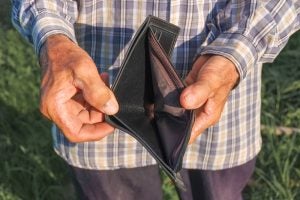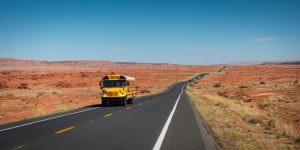Inflation hit a 40-year high in June, slowing slightly in July of 2022. Simply put, people are getting poorer. But, it’s not just low to-middle class America that’s hurting; it’s also the upper class. And it’s specifically hitting rural America hard, too.
According to Walmart’s quarterly earnings report, sales grew more than 8 percent, with the company attributing this growth to more high-income shoppers. Over 75 percent of the gains came from customers whose households earn more than $100,000 per year. But, what about rural residents and the American farmer?
Iowa State University has been working on a study of inflation’s impact on rural Americans, suggesting that the past two years inflation has hit rural families harder than urban families. While rural earnings have risen 6.1 percent in the past two years, expenses have risen 18.5 percent overall, cutting discretionary spending by 49.1 percent. Rural America is facing a heftier impact by inflation of the cost of used cars and trucks; they’re paying more for fuel, housing, food, feed, and even veterinary fees.

In the rural Southwest, the cost of inflation is evident. A once strong, local Cowbelles organization has struggled to maintain membership. Ranchers who live far from town can no longer make the drive to meetings, and younger members are working extra jobs to make up for increased expenses and don’t have the time. The historic women’s agricultural organization will fold if the organization can’t figure out how to increase membership and involvement.
Inflation’s most notable standout for rural Americans has been the increased cost of transportation — $2,470 more than it was two years ago. Most of rural America does not live in areas where groceries are easily accessible, and some families travel considerable distances for work, school, and shopping.
Other trending and increasing costs for rural America include the cost of used vehicles, rural housing costs, electricity, and health insurance. Health insurance alone has risen by a sizable $603 since 2020 for rural families.
Rural students already struggle with traveling long distances to attend classes, and with already-low enrollment in those districts, public school funding is limited. Even though rural residents make up 15 percent of the population, they are spread across 72 percent of the United States.

The long distances covered by school districts and parents mean increased costs in fuel-air, resulting in a more significant percentage of budgets being used to transport students. Despite the challenges of rural internet, some online programs — initially funded to provide educational opportunities during the pandemic — are now being utilized by students who struggle to make the long, daily commute to school.
The Inflation Reduction Act, signed by President Joe Biden on August 17, will supposedly help rural families with the growing challenges of inflation by lowering prescription drug costs for seniors, health insurance premiums, and energy costs.


